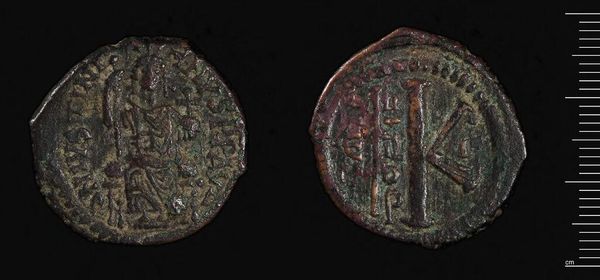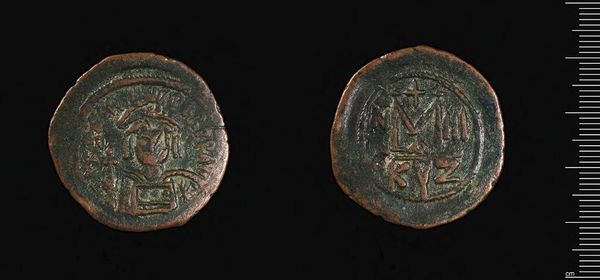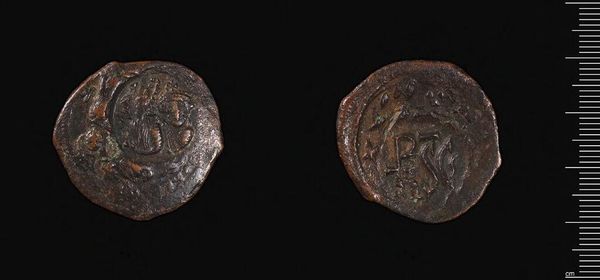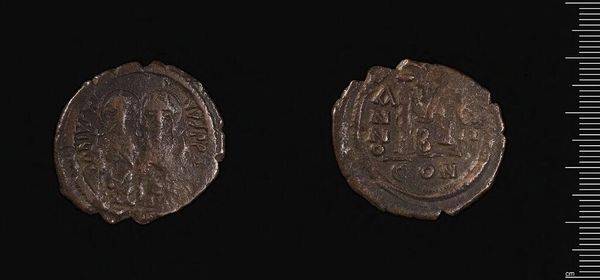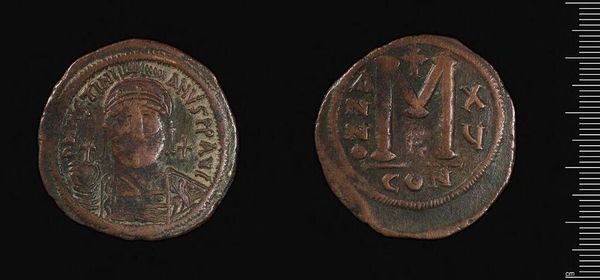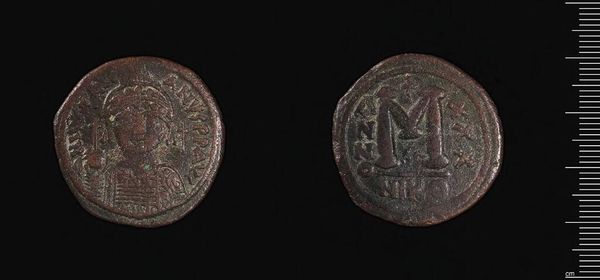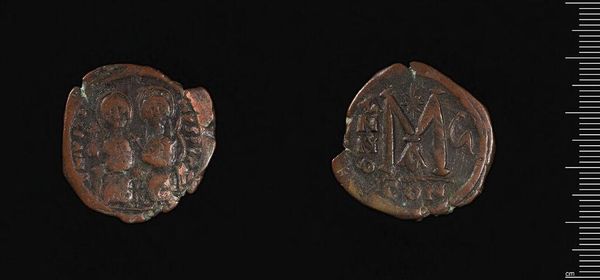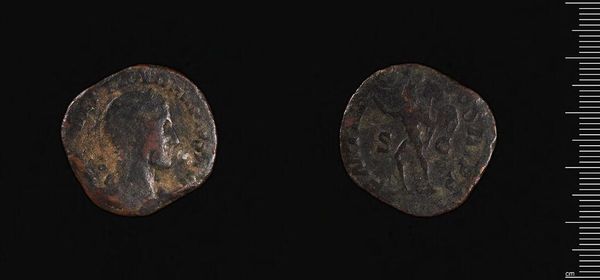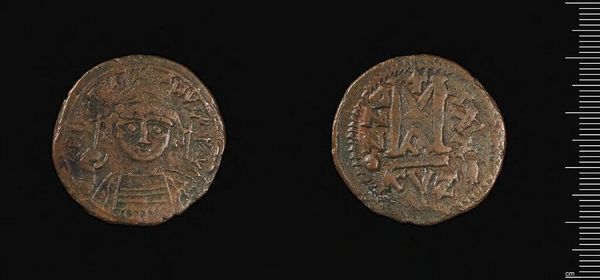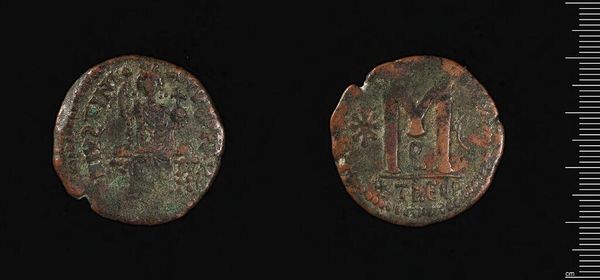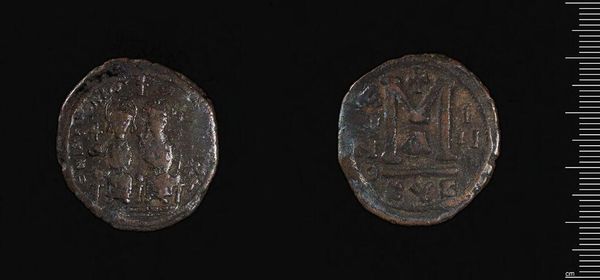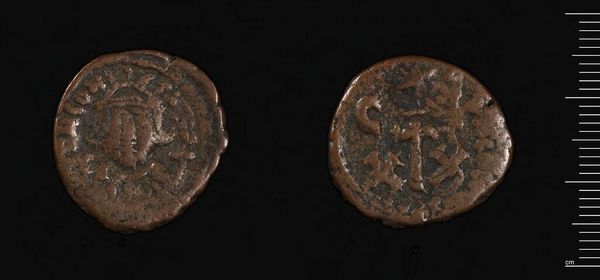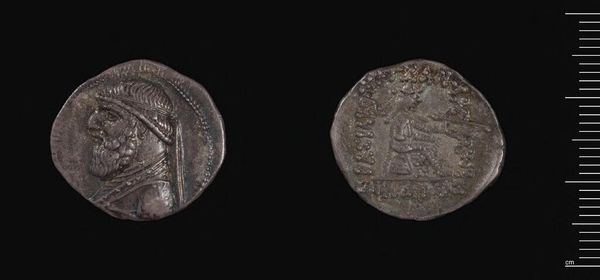
Dimensions: 12.61 g
Copyright: CC0 1.0
Curator: This is a coin of Justin II, dating from the Byzantine Empire. It's a bronze follis, a relatively common denomination, and weighs about 12.6 grams. The piece is held in the Harvard Art Museums. Editor: It looks ancient, worn, but still potent. I imagine the stories it could tell of power, trade, and the daily lives of people long gone. Curator: The coin is a political artifact, communicating the emperor’s authority. On one side, you see Justin II with his wife Sophia; a clear message of dynastic stability and imperial legitimacy. Editor: I'm struck by the choice of imagery – the shared halo suggests a divinely ordained co-rule. What does it tell us about the societal roles of women in this period? Curator: It reflects Sophia’s considerable influence. She was instrumental in policy, especially during Justin’s periods of mental instability. The coin presents a public image of empowered, shared leadership. Editor: The other side bears the large "M," representing the denomination of 40 nummi. It is interesting how monetary value is coupled with imperial messaging. Curator: Absolutely, the coin served simultaneously as a medium of exchange and a propagandistic tool, circulating both wealth and ideology. Editor: It is a reminder that objects, even the smallest coins, can carry complex narratives about power, gender, and belief. Curator: Indeed. It's a tangible link to the workings of a vast empire, and the people who lived under its rule.
Comments
No comments
Be the first to comment and join the conversation on the ultimate creative platform.
